Essays Contents
House and Home
February 1, 2024
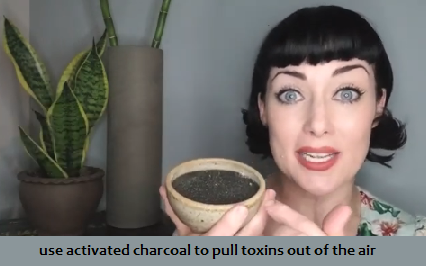
Are our homes toxic to humans and animals?
Indoor Air Pollution / Off-Gassing 101
YT channel "Mandy Lauderdale"
from the video description:
Most indoor air pollutants are odorless, especially pollutants that are the result of off-gassing from common household products, so it's up to you to be diligent about removing toxins you can neither see nor smell. Your body will thank you.
Transcript:
Formaldehide, ammonia, petroleum oh my!
Chances are those are three of thousands of chemicals floating through the air in
your house. You know where those chemicals come from...
new toys, furniture, paint, mattresses, carpet cleaning products,
hardwood floors.
Let's talk about air fresheners. Most conventional air fresheners aren't
freshening the air at all. It's like covering up chemicals with chemicals.
Basically anything new that you bring into your house most likely is
going to off-gas.
Hey Mandy what's off-gassing?
Off-gassing it's not what happens when you eat a bean burrito...
it's what happens when common household products release chemicals
into the air. It sucks!
That new car or new house smell is actually
"hey we got some new chemicals in the house or car" smell.
It can cause asthma, fatigue, congestion, or much worse.
When's the last time you attended a funeral for a friend that died of
leukemia and you said,
"oh, it's too bad they died of leukemia,
but their new house looked amazing!"
So how do you get those chemicals out of your house.
One of the best ways you can do this is by opening your windows every
single day. But some people can't do that. You might live in an environment where it's super toxic outside or it's pollen season or whatever. If you can't open your windows every day there are lots of other things that you can do.
Clean your damn house... and I mean clean your house with eco-friendly products. Some people will go clean their house and they're using products that
make the air more toxic.
Don't forget your drapes, bedding, pets.
Get an air purifier. Put it in your bedrooms. Put it in rooms you spend
the most time in... worth every penny. Change your air filter on a regular
basis, or even better yet... get the ones that you can clean so you're not
sending those to a landfill.
Get some houseplants.
Houseplants are known for cleaning the air and giving off oxygen.
Try to buy eco-friendly products that haven't been treated with a
bunch of chemicals... or buy used. Those items have already off-gassed.
As a precaution, when you buy something new set it outside for a
few days. Put it in the garage. Take all the packaging off.
Let it off-gass. You don't want to bring that into your home,
especially if you have kids.
Speaking of kids... think about when someone has a baby...
especially if it's their first baby... everyone gives them all this crap...
toys, cribs, strollers. Usually those items are brand new and
you're gonna put a new little baby into a piece of furniture that's
gonna off-gass. Gross.
If you have any damp areas in your house... like a basement...
get a dehumidifier. Mold problems are a nightmare.
Last but not least activated charcoal. Activated charcoal pulls toxic
particles from the air and it binds to all the little surfaces.
It will reach the absorption capacities... so you want to change it
about once a month.
All right, you guys... let's review.
Open your windows, clean your air filter, get an air purifier,
get a dehumidifier in areas of your house that are damp...
get some houseplants... clean your damn house...
utilize activated charcoal... if you need to do the hokey-pokey
get a gas mask.
If nothing else helps just...
(she gets close to the rug etc and breathes in deeply)
Health Concerns Associated with Side A: Isocyanates
EPA warning
Out-gassing or Off-gassing
wikipedia
Excerpts:
Outgassing (sometimes called offgassing, particularly when in
reference to indoor air quality) is the release of a gas that was dissolved,
trapped, frozen, or absorbed in some material.
Moisture, sealants, lubricants, and adhesives are the most common
sources, but even metals and glasses can release gases from cracks or
impurities. The rate of outgassing increases at higher temperatures
because the vapor pressure and rate of chemical reaction increases.
Outgassing can be significant if it collects in a closed environment
where air is stagnant or recirculated. For example, new car smell consists
of outgassed chemicals released by heat in a closed automobile. Even a
nearly odorless material such as wood may build up a strong smell if
kept in a closed box for months.
There is some concern that plasticizers and solvents released from
many industrial products, especially plastics, may be harmful to human
health. Long-term exposure to solvent vapors can cause chronic
solvent-induced encephalopathy (CSE).

HEMPCRETE AND STRAWBALE HOMES
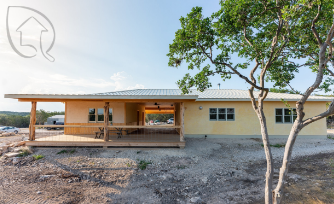

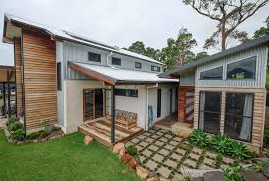
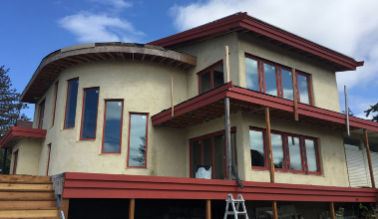
Hemp shiv is the only plant material that will petrify when mixed
with a little lime and water... sets up like concrete yet will remain
breathable allowing moisture to absorb and escape for hundreds of years.
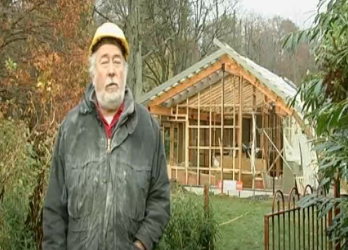
Building with Hemp Part 1/2
"SustainAndBuild" YouTube channel
Building with Hemp Part 2/2
Transcript: Part 1
Society is concerned with global warming and carbon emissions.
Buildings and building construction account for more than half of all co2 emissions. If we are to reduce emissions we need to make buildings energy-efficient but we also need to use low energy methods of achieving this.
Natural materials not only help to make buildings energy efficient but
also they can make buildings healthier and function better. Natural
materials generally have a much lower carbon footprint than conventional
building materials. Most conventional materials consume a great deal
of fossil fuel energy to produce and therefore contribute to co2 emissions.
We've been trying to find a method of building low carbon and
energy-efficient simple and affordable that uses natural materials.
A hemp and lime mixed together seems to answer all of those needs as
the technical construction was developed in France about 10 years
ago and used to a small extent there... but actually didn't really take
off for some reason.
We found out about the technology... did our own research.
A number of people came together in the UK and we decided it was
something that was commercially viable and it's taken off to a large
extent.
There there are probably about 50 hempcrete buildings all over the UK,
ranging from brewery warehouse... 20 million pound projects... down to
individual houses... and even people's sort of summer houses...
in their garden. I mean, it's been used for all sorts of different forms of
construction.
While this building... apart from the fact that it's a small house that's for
my father to live in... it's a demonstration of this technique... so that we
can prove that it works. We can show it to other people and to other
architects... other professionals and builders... so that if you want to
convince them of the technique they can actually come along and
have a look at it and see it in the flesh.
It's quite unique... hasn't been done before in Northern Ireland... so
this is usable to test both the processing and the complications of
detailing on a building... which is for ourselves.
The hemp research project was founded by Deborah(?) to look into
hemp which is a crop being used as a natural insulation... but here
cast with hemp. This has led to a publication. A book has just recently
been published by ourselves and other co writers... so this is quite
timely that this building is now happening exactly at this point... and
in fact we'll probably be reviewing some of the details that are in that
book because very much have a hands-on understanding and fusing
the material.
Now we started the superstructure that's the work above ground four
months ago. We start off with quite traditional footings... a normal
strict footing around the building and brought it up in block work up
to subfloor level... unavoidably using cement which you know how to
do... and be pragmatic about that. And then we started the primary
structure... and what we decided to do is to start off actually with
the principal the posts and the beams holding the roof structure
to end up with a sheltered framework and that was followed by the
stud work around the perimeter... which is then being cast around
with the hemp and lime.
The hemp needs a sort of rethinking in terms of what we call
traditional building construction because we've been using a cavity
block construction for the last century really... and a lot of plastics in
buildings so this is a monolithic construction... and insulation properties
of the hemp are both that it's a good insulator but also has thermal mass.
Monolithic means that it's one material right through.
It does have a stud wall buried in the middle of it but it isn't layers of
separate materials... so even timber frame construction, which is
favored by a lot of people who are trying to improve insulation has
too many layers and too many different processes... and that's what
we're trying to reduce.
This is the primary structure carrying the roof low. That's douglas-fir
locally sawn and that was constructed. The beginning of the process
here you can see the tail end of the shattering which is yet to be
removed. And this section... it has been taken away. This is cast just
a few days ago and still soft to the touch but firm. You can see it's
solid enough.
This is the stud wall that's sitting in the middle of that 300 thick line
casting so that's parent with some noggins cross noggins for stiffness
and here we're back to a sections not to finish being cast yet. This is
the base of the post here with a rigid fixing, so we got rigidity in the
whole building frame from the start sitting on its own pad stone
and the subfloor level there below.
This is the radon barrier coming up tucked into the DPC and we have
the electrics that we had to put this ducting in ahead of the hemp being
cast. Here we have one of the electric sockets which we've cast into the
wall because it wouldn't be practical to try and chase this material
so you've got to cast them in at the time.
And then here we've got the window reveal which is lined with the
Herakles board which is permanent shutter and that would stay in
place. The main thing that architects want to know about is...
how well does it work from a thermal point of view. So a 300
millimeter thick wall like the one we're building here will provide
good enough insulation to meet part L of the building regulations...
depending on whether you're in Northern Ireland or England.
Transcript: Part 2
And that gives you a U-value of somewhere about 0.2 to 1.3.
What we found though is that the performance of the building is much
better than that indicated simply by the U-value... because of the
thermal mass of the material. So where the tests have been done on
completed buildings they found that there's almost zero energy required
within the building to keep it warm and that whatever the temperature
is doing outside it stays exactly the same inside.
So you see, has a very very good thermal performance. It also
extremely good acoustically... absorbs sound and so it's very very
good if you want to reduce the noise in buildings. And it also helps to
buffer humidity within the building... so it actually absorbs moisture.
This means that you reduce the risk of mold growth and condensation
in a building. So it's what's known as breathable construction... though
that's a very difficult term to define but hemp-lime really does all of
those things... you know just in one very simple form of construction.
We've actually had to import the hemp from a producer and supplier
in England. It is that's the waste crop of a hemp. It's a very valuable
crop so it's not the long fibers it's the outer case chopped up. But fibers
are very beneficial in any reinforcements... have very good properties
to bind together a construction.
Once on site we take the big bales of hemp to bales of those two poor
bags of the proprietary lime mix made by Trudeau Cal. They offers
dry mix in a pan mixer which is not the normal cement mixer... much
bigger and horizontal. They're mixed dry and then the controlled
amount of water added. What we end up with is a dry crumbly mix
similar to apple crumble topping... so it's not sloppy.
It's dropped in chattering and then tamped with not too much
pressure... because we're trying to keep some air pocket for the
installation benefit the shuttering can be lifted within say 12 hour
period to a raised position... so we haven't had a shutter the whole building
and for the whole building that we have fit and control height so we
can reach to do the tamping. The shuttering comes off quite easily and
you end up with a quite a smooth surface particularly if you tamped
quite carefully.
It still feels soft to touch. You could put your thumb in it and would
be prone to damage if people were careless with it but actually is
self-supporting but it would hold itself within...
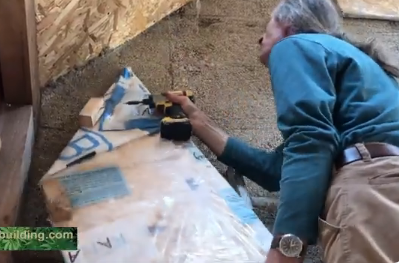
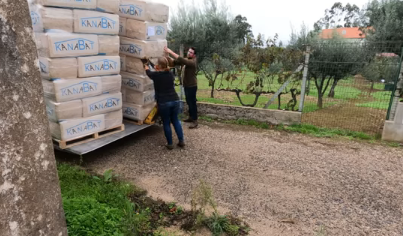
Other hempcrete information:
Spraying a Hempcrete Wall
spray applied hemcrete
material is "Hemcrete" (registered trademark)
and the lime is "Tradical" product

plastering with hempcrete
caution: lime is caustic, do no breathe it or get it in your eyes.
Hemp weighs only half of other stuccos and is easier to work with.
It does not crack or shrink because of the fiber. The plastering itself
improves the insulation properties of the wall... meaning that
the wall can breathe... which prevents mold
Let's Get PLASTERED! DIY Hemp Lime Plaster
"MAKEDOGROW" YouTube channel

STRAWBALE CONSTRUCTION

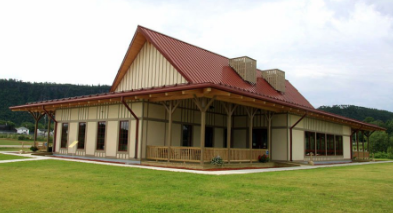
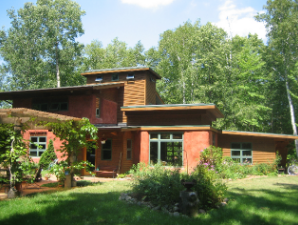



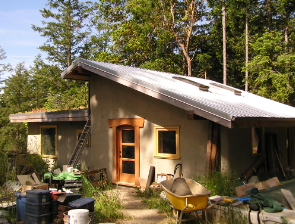

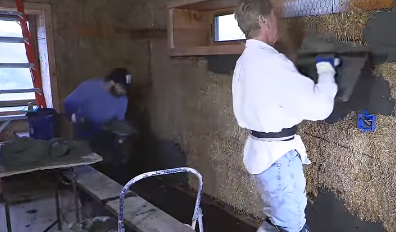
Straw Bale Stucco Construction tips
Read the video description:
"Straw bales have excellent insulation properties -
among the most cost-effective thermal insulation available.
A typical straw bale wall has an R-value greater than 7.
Straw has a similar insulation value to fiberglass batts for the equivalent thickness and is much cheaper. That's pretty good compared with
conventional 2 x 6 stud wall construction that has an R-value
around R-21. It is technically boring stuff, but it is important when you pay the heating bills."
"These straw bales and similar structures have been around since the
beginning of time. They keep us humans safe and out of the elements
of freezing rains and cold weather, as well as predators with large teeth
and appetites. The materials change or adapt from cob, which is clay,
sand, and straw, to dirt, and yes, Dung, to lime stucco and many other
outer skins for waterproofing. It’s very similar to Wattle and Daub."
"Straw Bales should not get rained on or be moldy when purchased.
This is just common sense. A breathable stucco is preferred. Let’s air in
and out. I’ve seen guys way back in the day hydrating the exterior
walls like they were made of stone; this is not advisable; misting the
exterior with just a quick spray of water to create a solid mechanical
bond is all that is needed. Excessive soaking or hydrating the exterior
straw can trap moisture, which can cause molding.
When building straw bale walls, one can get caught with their pants
down, meaning the dreaded rain or a chance of rain, so tarping the entire
structure might be necessary. It's best to start in spring, where there's
little to no chance of rain. Rain to straw bales is like kryptonite to
Superman; it’s not good.
Stray bale homes can't burn as once covered there is "No oxygen"
for a fire to get or remain started.
The TOP 6 Critical Details for Straw Bale Walls
Framing Windows & DOORS in STRAW BALE CONSTRUCTION
"HeirloomBuilders" YouTube channel
lots of info about building a home... from picking the site to repairs
LIME PLASTER: The CHEAPEST and MOST DURABLE SIDING
that's been Time-tested for 1000's of years!
Video starts out:
"you know, there is not much in life that is more empowering than
being able to literally spread a skin of armor onto your house to
protect it from the elements... to keep you warm in the winter and
cool in the summer... and keep your indoor air quality super clean...
to prevent your wall system in your house from burning... it's fire
resistant... it's water resistant... it's bug proof.
Lime plaster may very well be the best siding for your home."
What is lime plaster?
There's three main ingredients to lime plaster.
Water... that I start with at the bottom of the bucket.
Lime putty... that is a sticky glue-like paste.
It's a putty and it acts as the glue that binds the
mortar sand altogether to re-create limestone.
Lime putty is made with hydrated lime and water.
You mix it together in a big 55 gallon barrel and let it "slake"
for anywhere from two days to two weeks."
"Lime putty is actually going to cure into basically a rock...
that's going to make this straw bale wall system like a
sandstone castle."
Are our homes toxic to humans and animals?
Indoor Air Pollution / Off-Gassing 101
YT channel "Mandy Lauderdale"
EPA warning
Out-gassing or Off-gassing
wikipedia

HEMPCRETE AND STRAWBALE HOMES




Hemp shiv is the only plant material that will petrify when mixed
with a little lime and water... sets up like concrete yet will remain
breathable allowing moisture to absorb and escape for hundreds of years.

Building with Hemp Part 1/2
"SustainAndBuild" YouTube channel
Building with Hemp Part 2/2


Other hempcrete information:
Spraying a Hempcrete Wall
spray applied hemcrete
material is "Hemcrete" (registered trademark)
and the lime is "Tradical" product

plastering with hempcrete
caution: lime is caustic, do no breathe it or get it in your eyes.
Hemp weighs only half of other stuccos and is easier to work with.
It does not crack or shrink because of the fiber. The plastering itself
improves the insulation properties of the wall... meaning that
the wall can breathe... which prevents mold
Let's Get PLASTERED! DIY Hemp Lime Plaster
"MAKEDOGROW" YouTube channel

STRAWBALE CONSTRUCTION









Straw Bale Stucco Construction tips
Read the video description:
Framing Windows & DOORS in STRAW BALE CONSTRUCTION
"HeirloomBuilders" YouTube channel
lots of info about building a home... from picking the site to repairs
LIME PLASTER: The CHEAPEST and MOST DURABLE SIDING
that's been Time-tested for 1000's of years!
